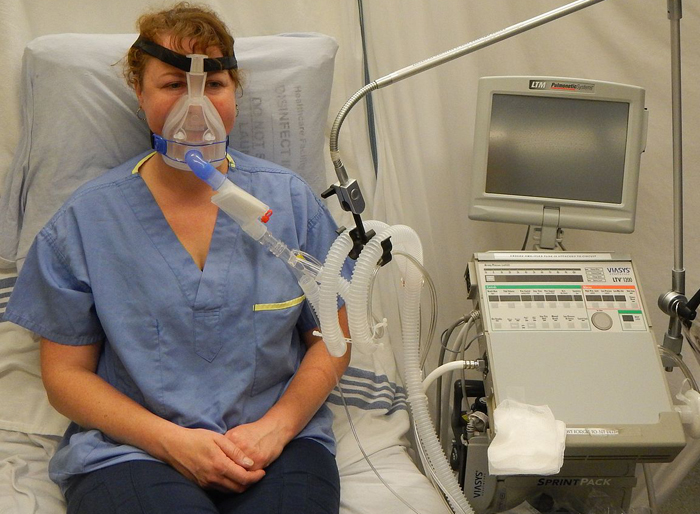Bipap vs. CPAP: Which Is the very best for Your Rest Condition?
When browsing the complexities of rest conditions, the option in between BiPAP and CPAP therapy is an essential factor to consider. While CPAP provides a constant air movement ideal for obstructive rest apnea, BiPAP's dual pressure settings may enhance convenience for those with even more complex respiratory problems.
Understanding Rest Disorders
Rest conditions encompass an array of problems that interfere with normal sleep patterns, influencing both the quality and duration of rest. These conditions can manifest in different kinds, including sleeplessness, rest apnea, narcolepsy, restless leg syndrome, and parasomnias. Each problem offers unique challenges, frequently resulting in considerable daytime exhaustion, cognitive problems, and psychological disturbances.
Sleeping disorders is characterized by difficulty falling or remaining asleep, while rest apnea entails duplicated disturbances in breathing throughout rest, frequently resulting in fragmented rest. Narcolepsy, on the other hand, is noted by extreme daytime drowsiness and abrupt rest attacks. Agitated leg syndrome causes uneasy sensations in the legs, triggering an unmanageable urge to relocate them, which can likewise impede the capacity to sleep.
The effect of rest conditions extends past specific wellness, affecting general productivity, partnerships, and lifestyle. Comprehending the certain nature of each disorder is critical for effective diagnosis and therapy. As rest health and wellness becomes significantly identified as an important part of general wellness, addressing these disorders is necessary for improving both sleep quality and everyday performance.
Exactly How CPAP Works
Continual Positive Airway Pressure (CPAP) therapy is regularly used as a key therapy for obstructive rest apnea (OSA) The mechanism of CPAP involves the usage of a maker that supplies a constant stream of air via a mask worn throughout rest. This air flow preserves positive stress in the airway, avoiding the collapse or obstruction of the throat that can happen throughout rest.
When a patient inhales, the CPAP machine gives a continuous flow of air, making sure that the respiratory tract continues to be open - BiPAP Rental. This not just relieves the symptoms of OSA, such as snoring and disrupted sleep patterns, however likewise decreases the associated health risks, consisting of cardio problems and daytime tiredness
The pressure settings on a CPAP maker can be tailored to meet individual patient demands, typically established through a rest research. Generally, CPAP treatment has actually been shown to considerably improve the high quality of sleep and general wellness for people experiencing from obstructive sleep apnea.
Exactly How BiPAP Works
BiPAP, or Bilevel Positive Airway Stress, is a specific form of non-invasive air flow that is especially advantageous for clients with problems such as intricate rest apnea or respiratory system problems. Unlike CPAP, which supplies a continual stream of air at a single pressure, BiPAP gives 2 distinct stress setups: a higher inspiratory stress for breathing and a lower expiratory pressure for exhalation. This dual-pressure method allows for easier breathing, reducing the initiative required during exhalation.
The gadget runs with a mask fitted over the nose or mouth, linked to a maker that generates air pressure. When the client breathes in, the device supplies the greater pressure to help with air flow, ensuring that the respiratory tract continues to be open. Upon exhalation, the device automatically minimizes the stress, making it extra comfortable for the individual to breathe out.

Trick Differences In Between BiPAP and CPAP
:max_bytes(150000):strip_icc()/GettyImages-635878206-25ee9a42856f41cfab94873074580679.jpg)
In contrast, BiPAP (Bilevel Favorable Airway Pressure) offers two different pressure setups: one for breathing and a lower one for exhalation. This dual pressure system allows for more comfortable breathing, particularly for clients that battle with exhaling against a continual stress. BiPAP is usually suggested for patients with complex sleep apnea, persistent obstructive pulmonary condition (COPD), or those who need extra support during rest.
Furthermore, the complexity of BiPAP tools generally causes a greater price and calls for extra careful titration than CPAP. BiPAP Rental. Recognizing these crucial distinctions can help in recognizing which device might be much more appropriate for certain rest disorders, setting the foundation for informed therapy decisions
Picking the Right Treatment
The decision between BiPAP and CPAP treatment mainly hinges on the particular qualities of the sleep disorder, the client's general health, and their comfort with the tool. CPAP, which supplies a continuous stream of air, is generally prescribed for obstructive sleep apnea (OSA)
Conversely, BiPAP supplies 2 degrees of stress: one for breathing and a reduced one for exhalation. This dual pressure system is valuable for patients with complex sleep apnea or those that experience trouble exhaling versus a read this constant pressure. Additionally, BiPAP is often suggested for individuals with respiratory conditions, such as persistent obstructive pulmonary illness (COPD), where differing pressure setups can boost comfort and conformity.
Ultimately, a detailed assessment by a rest specialist, consisting of a sleep study, can assist establish which treatment lines up ideal with the patient's requirements. Factors such as comfort, convenience of use, and details clinical problems need to also be taken right into factor to consider to optimize therapy results.
Verdict
In summary, both BiPAP and CPAP serve distinct purposes in the monitoring of sleep disorders. CPAP works for obstructive rest apnea via constant air movement, while BiPAP offers twin stress settings that enhance convenience for those with complicated rest apnea or breathing concerns. The selection between these therapies must be guided by individual demands and problems, necessitating an extensive examination by a rest specialist to make sure optimal treatment results and enhanced quality of rest.

Overall, CPAP treatment has been revealed to substantially boost the top quality of rest and total health and wellness for people suffering from obstructive rest apnea.
BiPAP is often recommended for Check This Out patients with complicated rest apnea, persistent obstructive lung disease (COPD), or those who require additional assistance during rest.
CPAP is effective for obstructive rest apnea with constant air movement, while BiPAP offers double pressure setups that enhance comfort for those with complex sleep apnea or breathing problems.